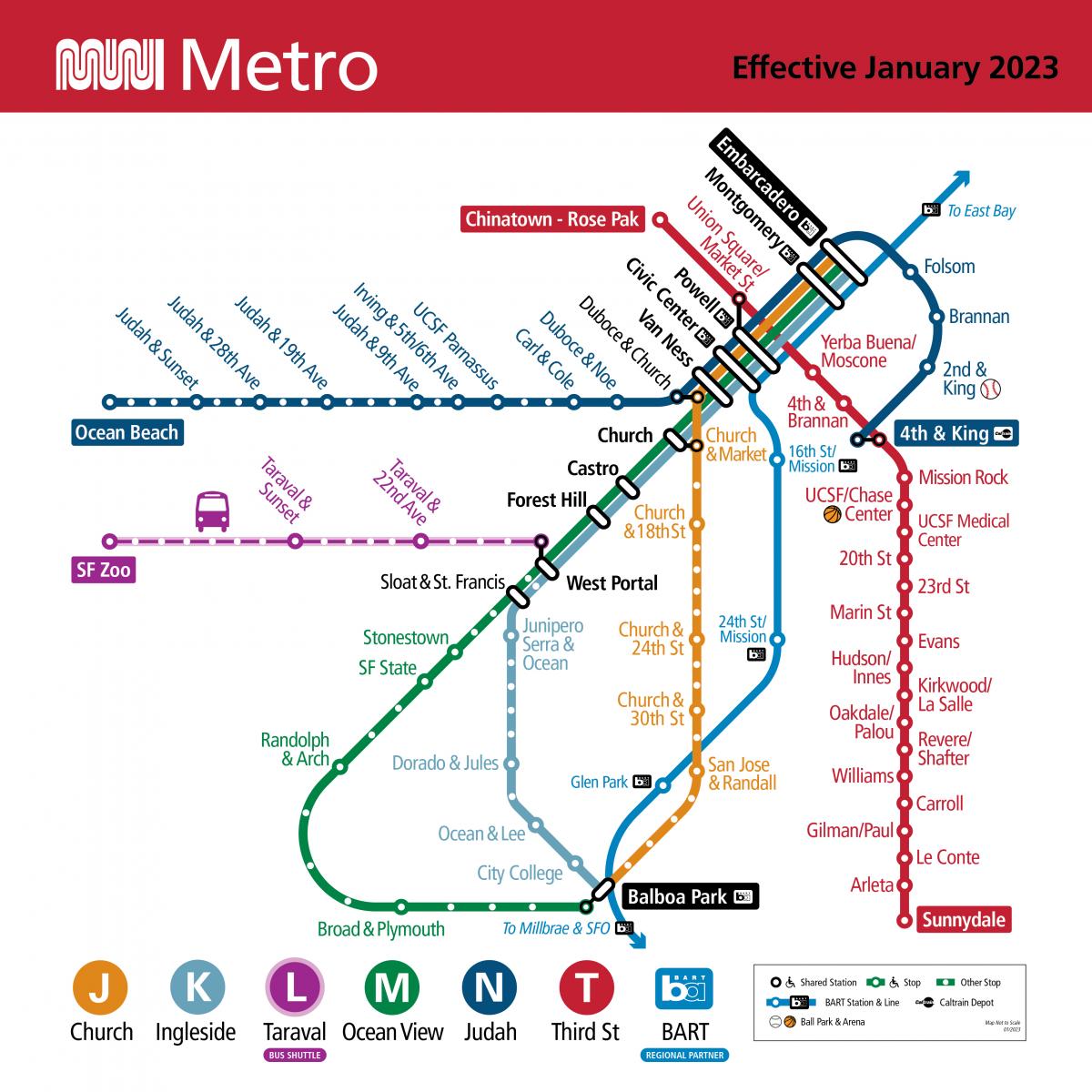By Christopher Ward
 New Muni Metro map.
New Muni Metro map.
This Saturday the T Third starts its long-awaited new route connecting Chinatown-Rose Pak Station from 4th & King in Central Subway, Mondays through Fridays, 6 a.m. to midnight every 10 minutes and Saturdays and Sundays, 8 a.m. to midnight every 12 minutes.
The K Ingleside will now travel between Balboa Park and Embarcadero Station. Customers using Embarcadero & Folsom, Embarcadero & Brannan and 2nd and King platforms should transfer to the N Judah at Powell Station or 4th & King.
The following bus service changes also start this Saturday:
- The T Third Bus will now run along 3rd and 4th Streets in SoMa and on Stockton Street north of Market Street to align with the new T Third rail line and will no longer travel on the Embarcadero and Market Street.
- The 6 Haight/Parnassus will now run until 12 a.m. daily instead of 10 p.m. to cover the service gap on Haight Street.
- The 21 Hayes will now run to Fulton Street and 8th Avenue on weekdays after 7 p.m. and weekends all day to provide access to Golden Gate Park. There will be no additional stops between Stanyan Street and 8th Avenue.
- The terminals on the 12 Folsom/Pacific and 36 Teresita are changing to provide better operator relief points, with minor reroutes near Cesar Chavez and Valencia Streets.
- Service will be added on 28 19th Avenue and 38R Geary Rapid to help reduce crowding.
- The bus stops at 4th and Folsom streets and 4th and Howard streets will be consolidated into one stop in front of the new Yerba Buena/Moscone Station to provide better connections for customers as part of 4th Street Improvement Project.
Customers traveling to stops along the Embarcadero or the baseball stadium at 2nd & King should use the N Judah.
Customers going to Sunnydale should catch the new T Third at the new Union Square/Market Street Station.
For more travel and connections tips read our Frequently Asked Questions.
The new Central Subway tunnel runs underneath the Market Street subway, which means the stations are deeper and have very long escalators – the longest in the United States west of the Mississippi. There are also two glass elevators at each station from street level to concourse level and from concourse level to platform level for accessibility.
At Union Square/Market Street Station, the elevators are in the center of the concourse with their own fare gates.
MuniMobile and Lifeline customers may use any of the wide fare gates at the Union Square/Market Street Station – at the Geary escalators, the Ellis escalators or the elevators in the center of the concourse.
WiFi Connectivity in the New Subway Stations
All three new Central Subway underground stations are equipped with WiFi, and cellular service will be set up soon. To connect to the free, open WiFi network, open your phone’s WiFi settings and select #SFWiFi and enjoy connectivity on all station platforms and concourse levels.
To report WiFi connectivity issues please take note of the exact location in the station where the signal is low or nonexistent and call 311 You can also write to us here with any feedback or questions.
Enjoy your ride on Muni!
Published January 06, 2023 at 07:31AM
https://ift.tt/rP7fb9F
Nhận xét
Đăng nhận xét